45 bad fats on food labels
15 Most Deceptive Food Label Terms That Are Fooling You The FDA states that foods with this label must not contain more than two milligrams of cholesterol per serving. If the food's per-serving fat content for main dishes exceeds 19.5 grams or 26 grams for meal products, the total amount of fat per serving must be labeled beside the "cholesterol-free" claim. Keep in mind that not all cholesterol is bad. How to Read a Food Label & How to Find Unhealthy Hidden Ingredients These types of fats help children absorb vitamins and compliment cognitive skills. However, too much of any fat can be burdensome and lead to weight gain. Now when reading a food label, you need to make sure that the product does not have too much saturated fat; and that it does not have any trans fats. Trans fats should be avoided. Trans Fat
Good fats and bad fats - Saga If a food product has these words on the label it must contain 25% less fat than a similar standard product. This can still mean a lot of fat! Read the label carefully to see how much fat there is in 100g of the food. Less than 5% fat - or 95% fat free This means that the food has less than 5g of fat per 100g.

Bad fats on food labels
Which Fats Are Good & Bad for Your Health? - eMediHealth Unsaturated fats are loosely packed fatty acids that bend and move, which is why this fat is commonly liquid at room temperature. Oils are the most recognizable form of unsaturated fat, including olive, canola, or vegetable oil. It is recommended to choose oils over solid fats for a healthy lifestyle. 2. Saturated fat Food Labels | CDC - Centers for Disease Control and Prevention All the numbers on this label are for a 2/3-cup serving. This package has 8 servings. If you eat the whole thing, you are eating 8 times the amount of calories, carbs, fat, etc., shown on the label. Total Carbohydrate shows you types of carbs in the food, including sugar and fiber. Choose foods with more fiber, vitamins, and minerals. 7 Nutrition Label Ingredients to Avoid - Walker Methodist Simply replacing trans-fats with healthy fats could decrease your risk of heart disease by 53 percent. Partially Hydrogenated Oils Partially Hydrogenated Oil is another form of trans-fat to watch out for on nutrition labels. This type of trans-fat is known to clog arteries and contribute to obesity and heart disease. High Fructose Corn Syrup (HFCS)
Bad fats on food labels. Fats | Nutrition.gov Look up how much fat is in popular foods, like avocados and eggs. Nutrient Lists from Standard Reference Legacy (2018) ... and how to use the Nutrition Facts Label to replace saturated fat with mono and polyunsaturated fats. Saturated Fat. HHS, Food and Drug Administration, Center for Food Safety and Applied Nutrition. Read about saturated fat ... What Foods Are High in Fat? High-Fat Foods to Avoid - MedicineNet Read labels when buying packaged products, and choose foods that are "trans fat-free." Avoid buying foods with labels that mention partially hydrogenated vegetable oils, as these may contain some trans fats. ... These foods are rich in bad fats, namely, saturated and trans fats and should be avoided: Deep-fried foods (French fries, fritters ... Good Fats vs. Bad Fats: Everything You Need to Know - Healthline Labeling laws allow food companies to round down to zero and claim "no trans fats" or "zero grams of trans fats" if the amount per serving is less than 0.5 g, despite still containing ... What Are the Fats Not Listed on Nutrition Labels? - SFGATE Vegetable oils, especially canola, olive and peanut oils, almonds, hazelnuts, pecans, pumpkin seeds and sesame seeds are all good sources of monounsaturated fats. Polyunsaturated Fats...
Trans Fats, Health and Nutritional Labeling of Foods The labeling requirements are based on scientific evidence that consumption of saturated fats and TF may raise low-density lipoprotein (LDL) levels and increases the risk of coronary heart disease. LDL is commonly known as "bad cholesterol". A small amount of TF is found naturally in vegetable oils and some animal derived foods. How to Read Food Labels for Fats and Oils A Note on Ingredient Lists. Fats and oils can come from many sources, like animal fats, fish, seeds, plants, and nuts. Reading the ingredient lists on products will reveal the source of the fat. For oils and fats ingredient lists, fats and oils are referred to by their common names (e.g., "beef fat," "cottonseed oil"). Dietitians Say These Are The Biggest Red Flags To Look For ... - SheFinds While working towards healthy weight loss, one hack for ensuring you're providing your body with the ingredients it needs to see results is by checking the nutrition labels of your food.Providing valuable information on the macro and micronutrients each grocery item contains, the labels can help to determine whether or not certain foods should make it into your cart, and subsequently into ... Facts about fat - NHS The main types of fat found in food are: saturated fats; unsaturated fats; Most fats and oils contain both saturated and unsaturated fats in different proportions. As part of a healthy diet, you should try to cut down on foods and drinks that are high in saturated fats and trans fats and replace some of them with unsaturated fats. Saturated fats
8 Ways Your Nutrition Label Is Misleading You - Taste of Home The FDA has finalized its decision to eliminate trans fats from food, but manufacturers have until 2018 to meet the new standards. So for now, be leery of "0 trans fat" claims. The label can say zero as long as there are 0.5 grams max of trans fat per serving. And that small amount can add up if you consume more than one serving. 8. High Fiber Top 10 High Fat Foods to Avoid - myfooddata Read ingredient labels and avoid any trans or partially hydrogenated fats or oils. High-fat foods to avoid include fast foods, whipped cream, fatty meats, fried foods, fatty snacks, processed meats, desserts, fatty salad dressings, animal fats, and trans-fats. ( 1) The daily value (DV) for fat is 78 grams per day. ( 2) 8 misleading food marketing labels | AGDAILY Because only sodium and potassium nitrate and nitrite are considered to be curing agents, processed meats that are cured using naturally occurring nitrates and nitrites derived from sea salt, celery or beets or some other vegetable or fruit naturally high in nitrate are required to be labeled as "uncured." Easy Guide to Understanding Food Labels When You Have High ... - MyDoc Saturated fat is a type of fat that raises your total and LDL cholesterol and risk of heart disease, so intake should be limited. The average adult should consume less than 20 grams of saturated fat per day. Trans fat is more harmful and damaging to the arteries as it raises LDL (bad) cholesterol and lowers HDL (good) cholesterol.
Trans Fats | American Heart Association Mar 23, 2017 · Many restaurants and fast-food outlets use trans fats to deep-fry foods because oils with trans fats can be used many times in commercial fryers. Several countries (e.g., Denmark, Switzerland, and Canada) and jurisdictions (California, New York City, Baltimore, and Montgomery County, MD) have reduced or restricted the use of trans fats in food ...
Diabetic Food List: Best and Worst Choices - WebMD Natural sources of vegetable fats, such as nuts, seeds, or avocados (high in calories, so keep portions small) Foods that give you omega-3 fatty acids, such as salmon, tuna, or mackerel
Interpreting Total Fat and Types of Fat on Food Labels - Nina Cherie ... Trans fats and, in some cases saturated fats, are considered "unhealthy" or "bad" while monounsaturated and polyunsaturated (omega-3) fats are generally healthier alternatives or "good" fats. Saturated fats are naturally found in animal-based foods including meats, dairy products and eggs.
Food Labels: 5 Harmful Ingredients To Avoid | ThePostGame.com Here are some of the worst ingredients that are added to many foods that you should look out for and avoid: Partially Hydrogenated Oil Partially hydrogenated oil is another name for a trans fat....
Understanding Food Nutrition Labels | American Heart Association When the Nutrition Facts label says a food contains "0 g" of trans fat, but includes "partially hydrogenated oil" in the ingredient list, it means the food contains some trans fat, but less than 0.5 grams per serving. So, if you eat more than one serving, you could end up eating too much trans fat.
Food Label Detective: How to Spot the Good Fats Both saturated fat and trans fat amounts are clearly listed underneath "Total Fat," although some foods labeled trans fat-free may still contain small amounts (up to 0.5 grams) of trans fat. That's why it's important to also check a food's ingredient list. Avoid foods that contain "partially hydrogenated oil," which means trans fat is present.
Trans Fats: The Truth in Labeling | Atkins This is a bad rule that needs changing. With small and unrealistic "serving sizes" on the nutrition facts label, each of which contains just under ½ a gram, you could easily wind up consuming a gram or two in a typical portion. The regulation allows manufacturers to state that their product is "trans fat free" when in fact, it may not be.
Fats | ADA - American Diabetes Association Trans fats are listed on the Nutrition Facts label, making it easier to identify these foods. However, keep in mind that if there isn’t at least 0.5 grams or more of trans fat in a food, the label can claim 0 grams. To avoid as much trans fat as possible, you should read the ingredients list on food labels. Look for words like hydrogenated ...
Fat Content on Food Labels - Reading Between the Lines The Mayo Foundation continued, "Still, you may be able to tell if a product contains trans fat, even if it's not directly listed on the food label. Look for the words ' hydrogenated ' or 'partially hydrogenated' in the list of ingredients. These terms indicate that the product contains trans fat.
10 Natural Ways to Lower Your Cholesterol Levels - Healthline Nov 23, 2021 · This means some foods contain trans fats even though their labels say “0 grams of trans fat per serving.” To avoid being misled, be sure to read the ingredients list in addition to the ...
The truth about fats: the good, the bad, and the in-between Apr 12, 2022 · For long-term health, some fats are better than others. Good fats include monounsaturated and polyunsaturated fats. Bad ones include industrial-made trans fats. Saturated fats fall somewhere in the middle. All fats have a similar chemical structure: a chain of carbon atoms bonded to hydrogen atoms.
Food Labels: Fat & Cholesterol | Home & Garden Information Center Eating too much total fat, saturated fat, trans fat or cholesterol may increase your risk of certain chronic diseases, like heart disease, high blood pressure and some cancers. Facts on Food Labels Food labels contain clues to a food's fat and cholesterol content, including the amount per serving.
How to Understand and Use the Nutrition Facts Label | FDA - U.S. Food ... Saturated fat, sodium, and added sugars are nutrients listed on the label that may be associated with adverse health effects - and Americans generally consume too much of them, according to the...
Good Fats, Bad Fats :: Diabetes Education Online Replacing saturated fats in your diet with monounsaturated fats can help lower LDL “bad” cholesterol without lowering the HDL “good” cholesterol. Omega-3 fatty acids from marine sources are considered heart healthy, because they lower the level of triglycerides (or fats) and cholesterol circulating in your bloodstream.
7 Hidden Messages In Packaged Food Labels — Eat This Not That As for trans fat, while some trans fats are created naturally in some foods (but in very small amounts), most items with partially hydrogenated trans fat can increase blood cholesterol, LDL cholesterol, and triglyceride levels. In short, it could increase your risk of cardiovascular disease. In short, be wary of items with a high trans-fat count.
Often no difference between good and bad fats. On some food labels, there is also just an indication of how much fat is contained in a product but there is no differentiation between good and bad fats. Even though all kinds of fats contain a similar amount of calories, there are still huge differences regarding their health effects. ...
7 Nutrition Label Ingredients to Avoid - Walker Methodist Simply replacing trans-fats with healthy fats could decrease your risk of heart disease by 53 percent. Partially Hydrogenated Oils Partially Hydrogenated Oil is another form of trans-fat to watch out for on nutrition labels. This type of trans-fat is known to clog arteries and contribute to obesity and heart disease. High Fructose Corn Syrup (HFCS)
Food Labels | CDC - Centers for Disease Control and Prevention All the numbers on this label are for a 2/3-cup serving. This package has 8 servings. If you eat the whole thing, you are eating 8 times the amount of calories, carbs, fat, etc., shown on the label. Total Carbohydrate shows you types of carbs in the food, including sugar and fiber. Choose foods with more fiber, vitamins, and minerals.
Which Fats Are Good & Bad for Your Health? - eMediHealth Unsaturated fats are loosely packed fatty acids that bend and move, which is why this fat is commonly liquid at room temperature. Oils are the most recognizable form of unsaturated fat, including olive, canola, or vegetable oil. It is recommended to choose oils over solid fats for a healthy lifestyle. 2. Saturated fat

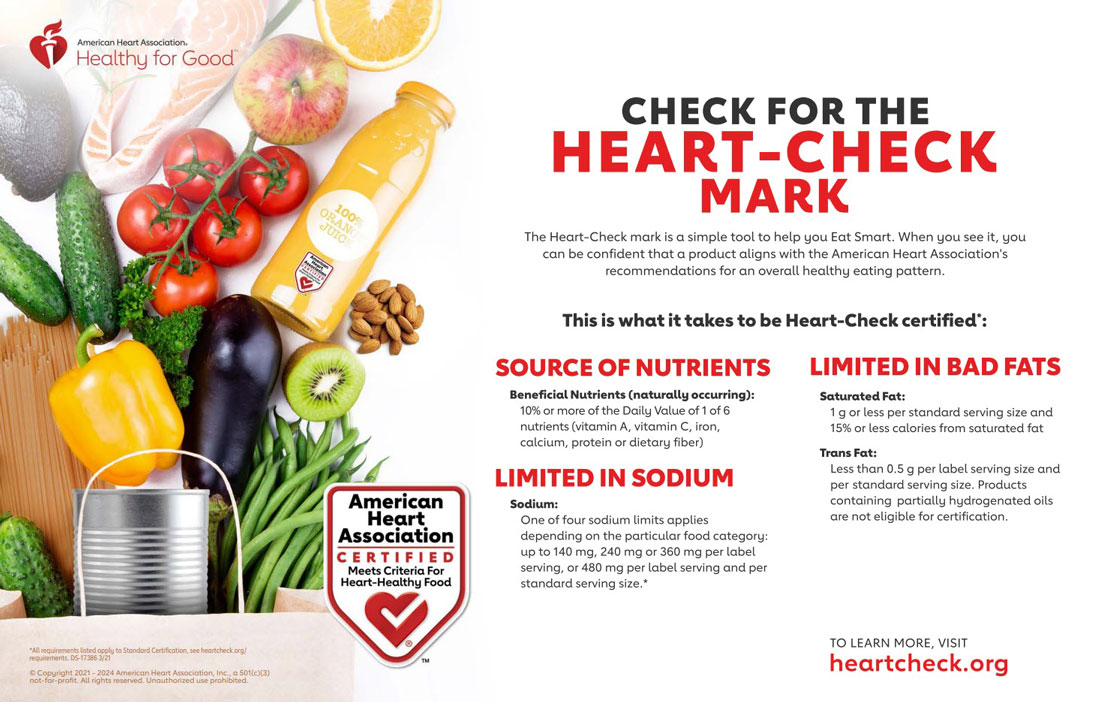
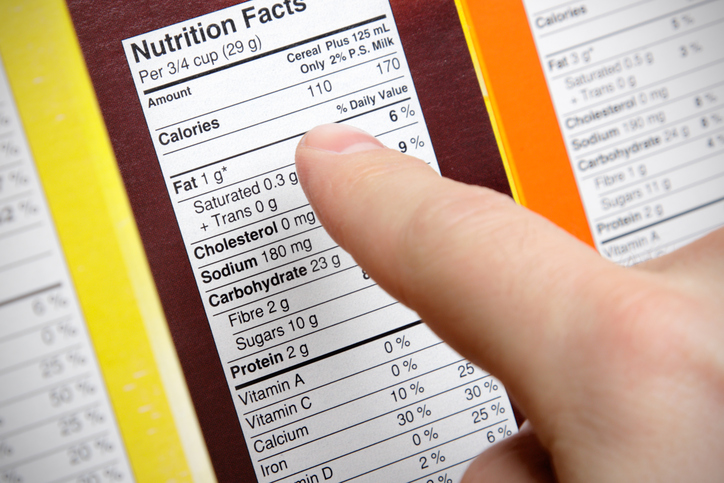
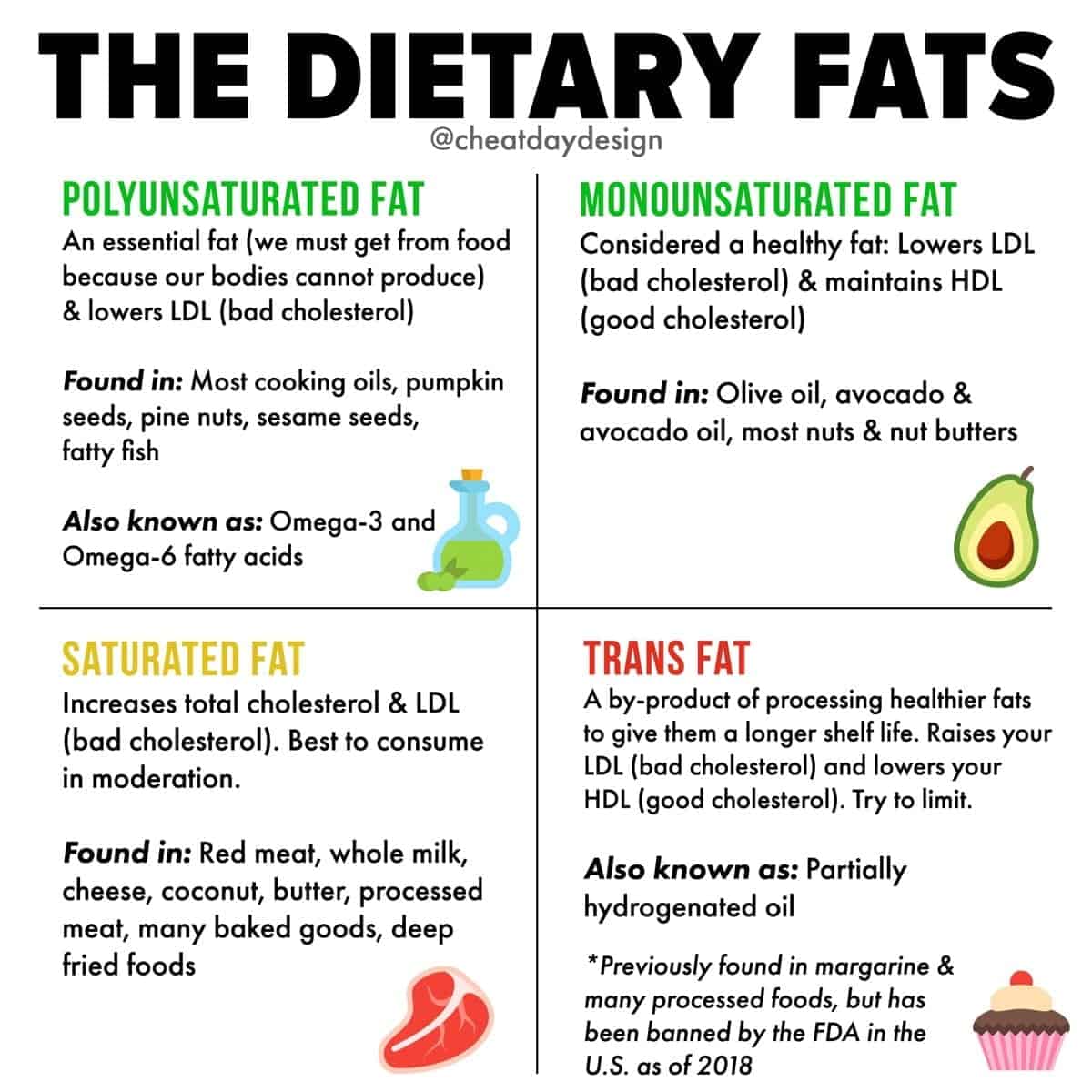
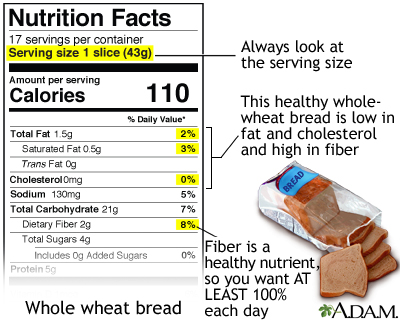
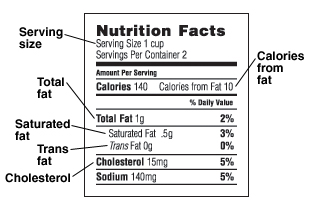

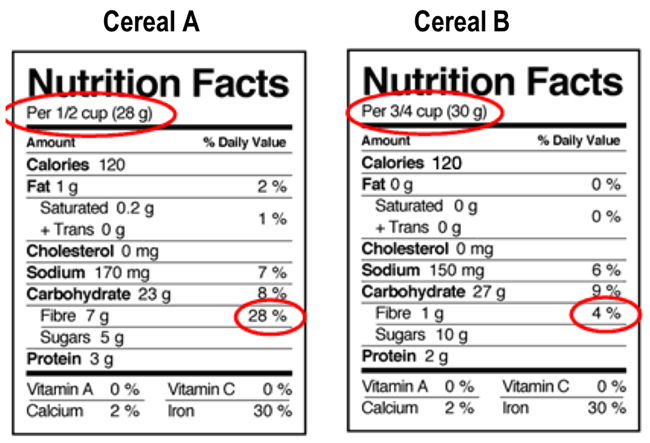

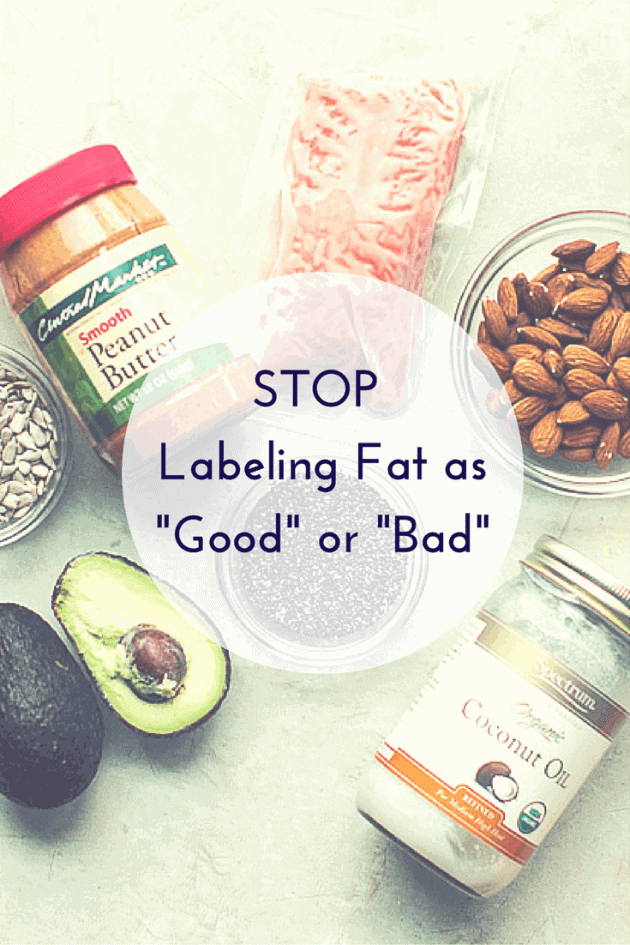
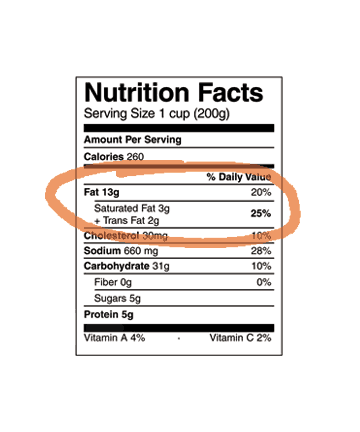
/steak-56d0d9673df78cfb37b94242.jpg)
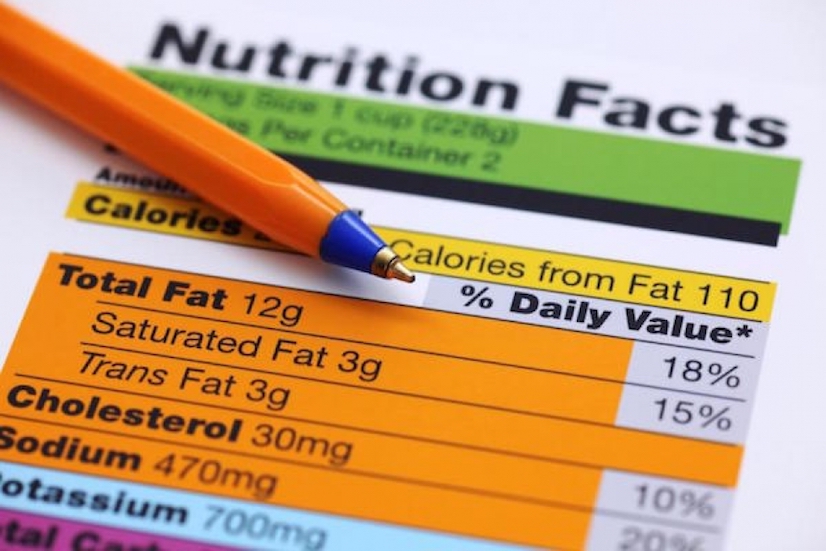
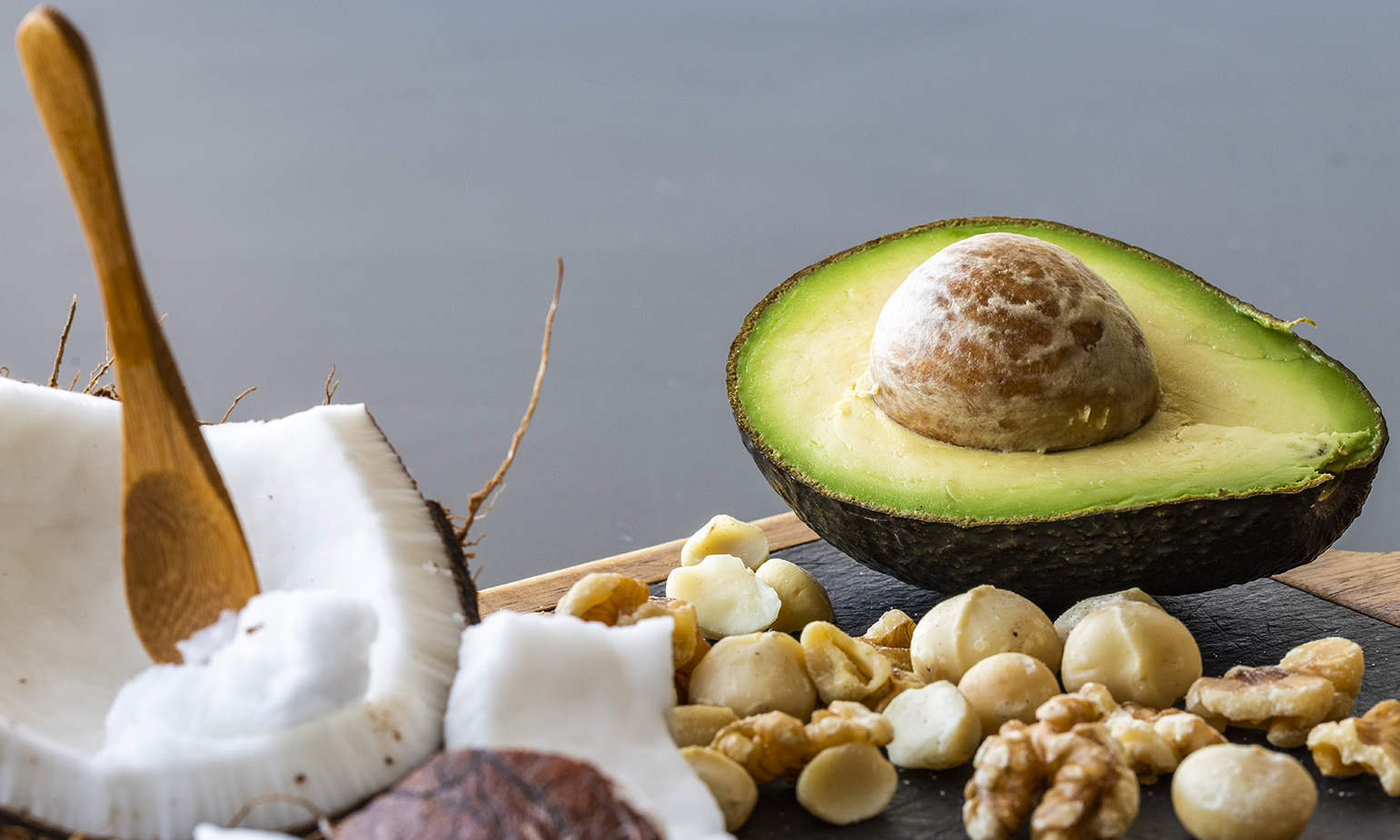
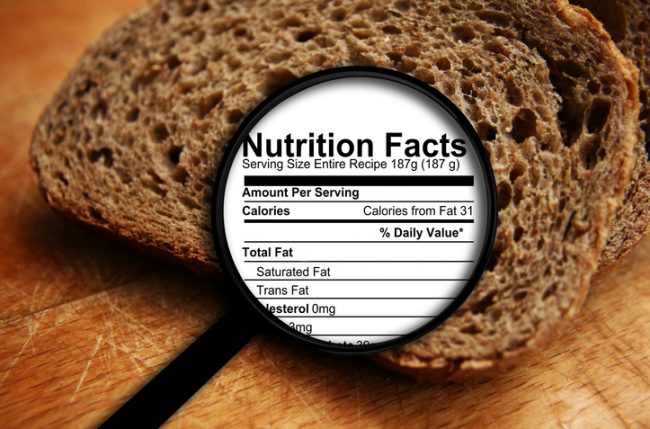
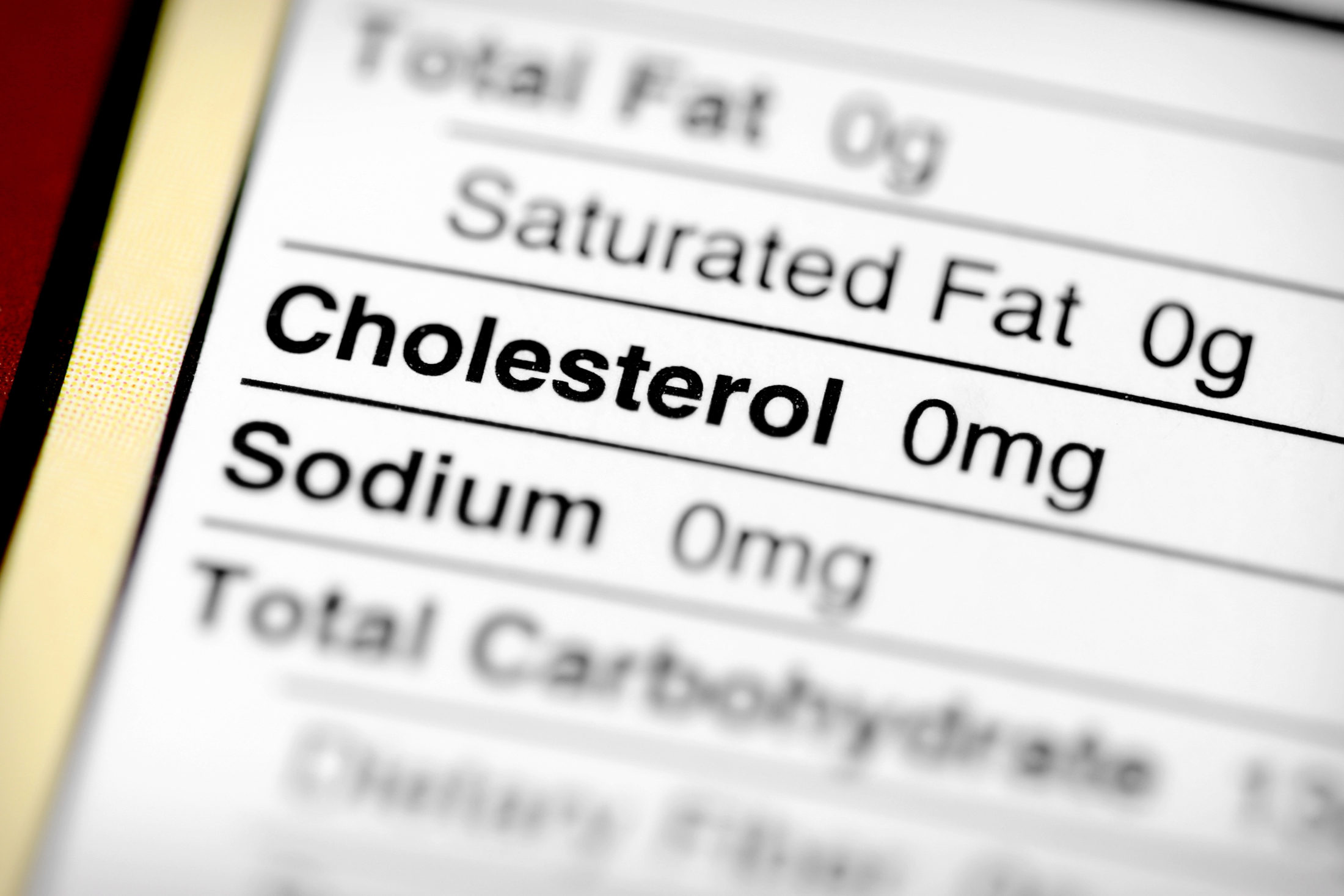

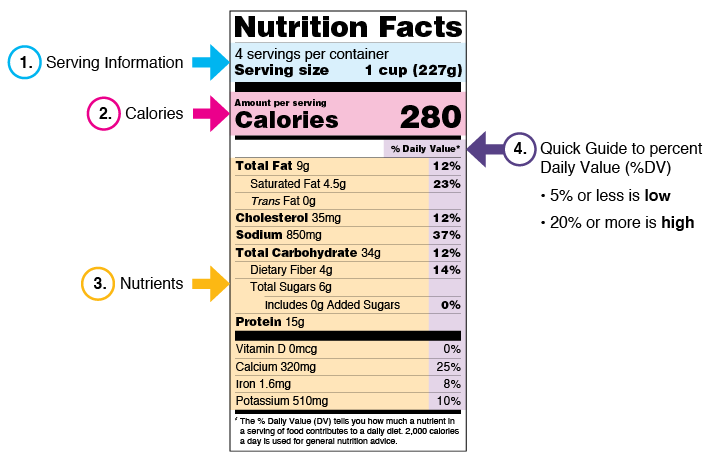
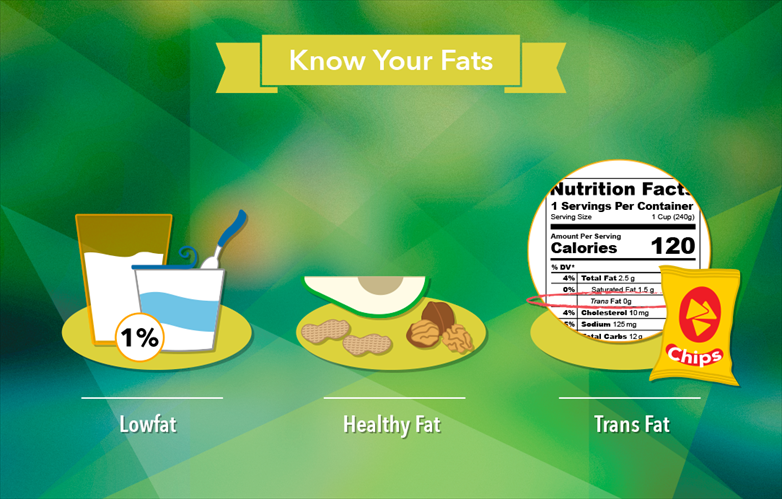

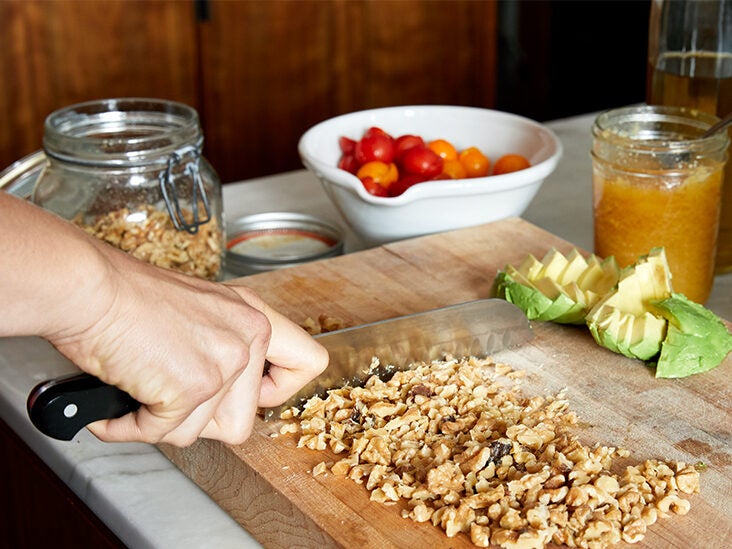

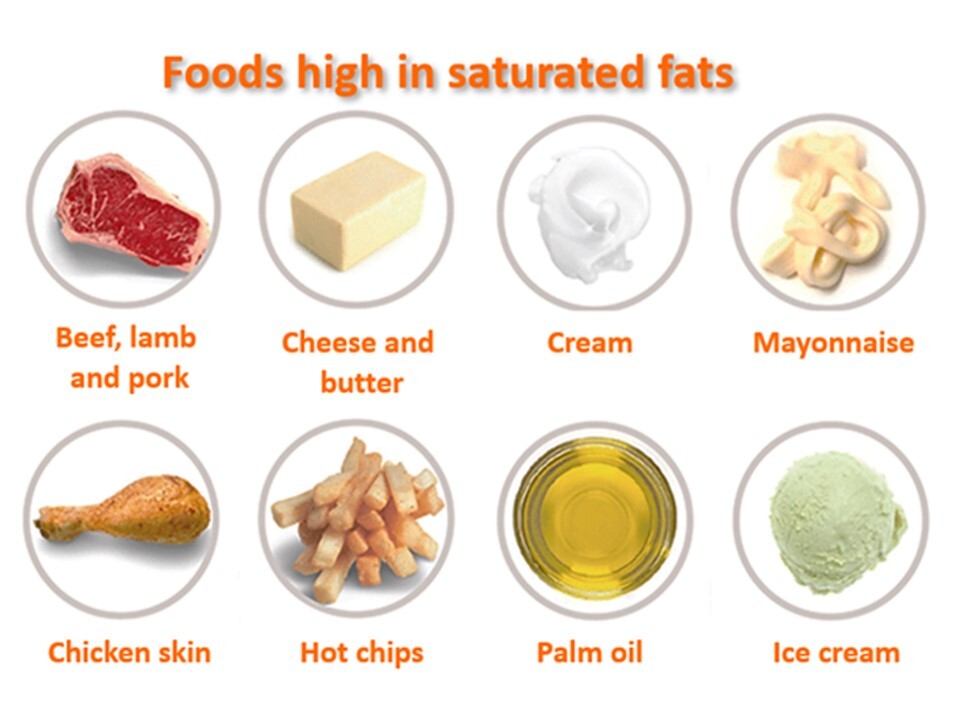
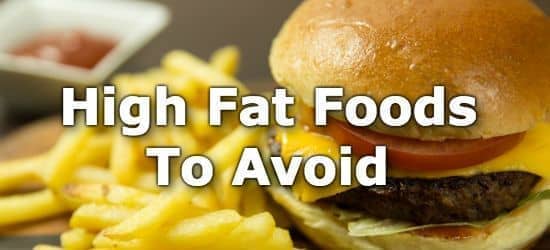
/saturated_fats-56a471143df78cf772826ad5.png)

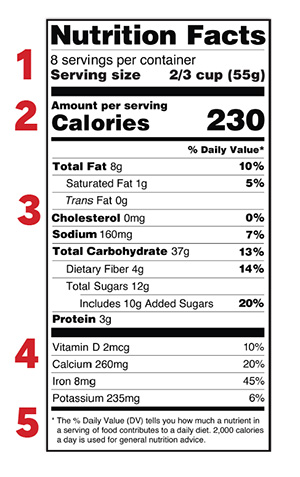


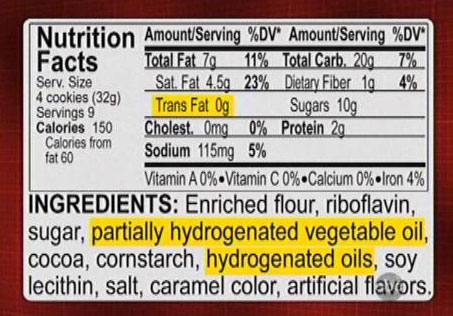

/Untitled-design-1--5755c3703df78c9b46903dab.jpg)

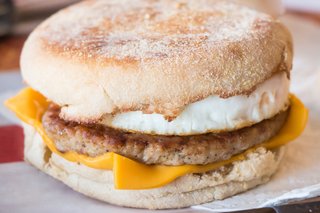
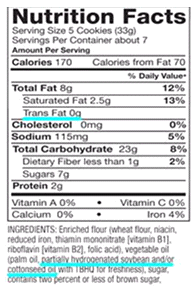
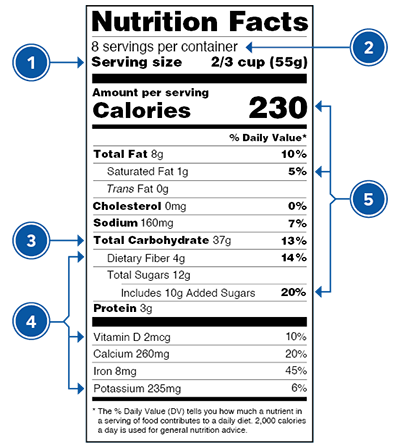
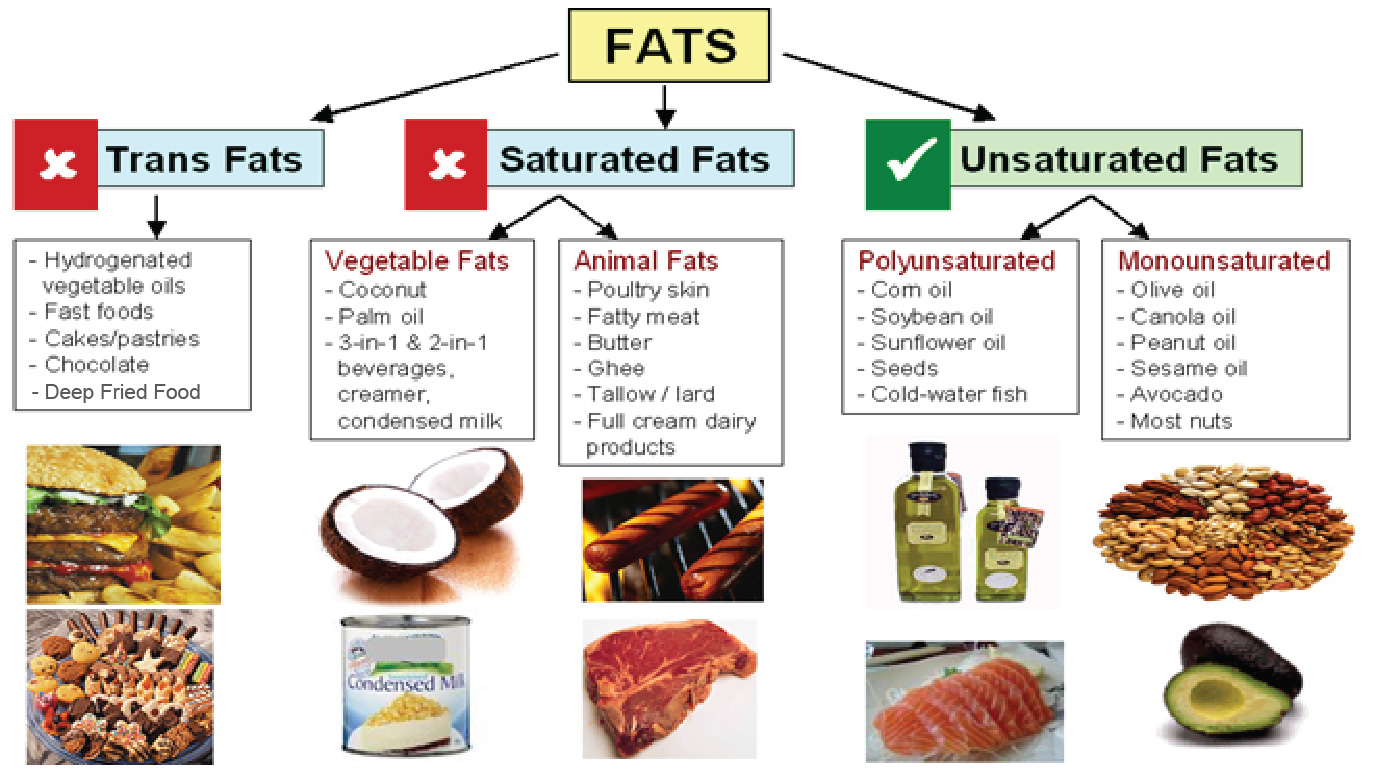

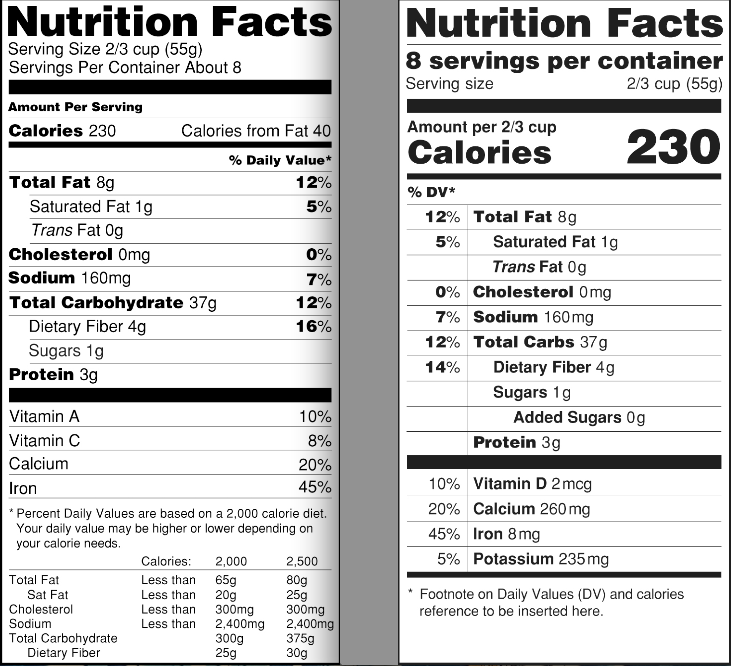
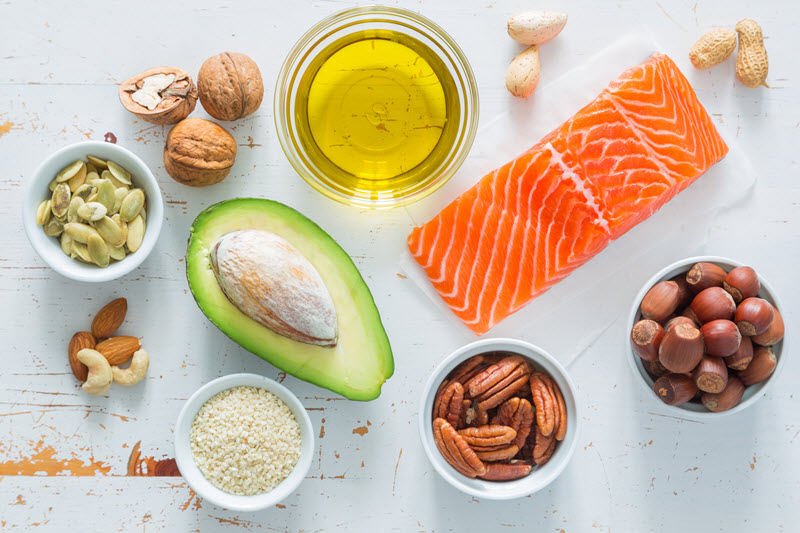


Post a Comment for "45 bad fats on food labels"